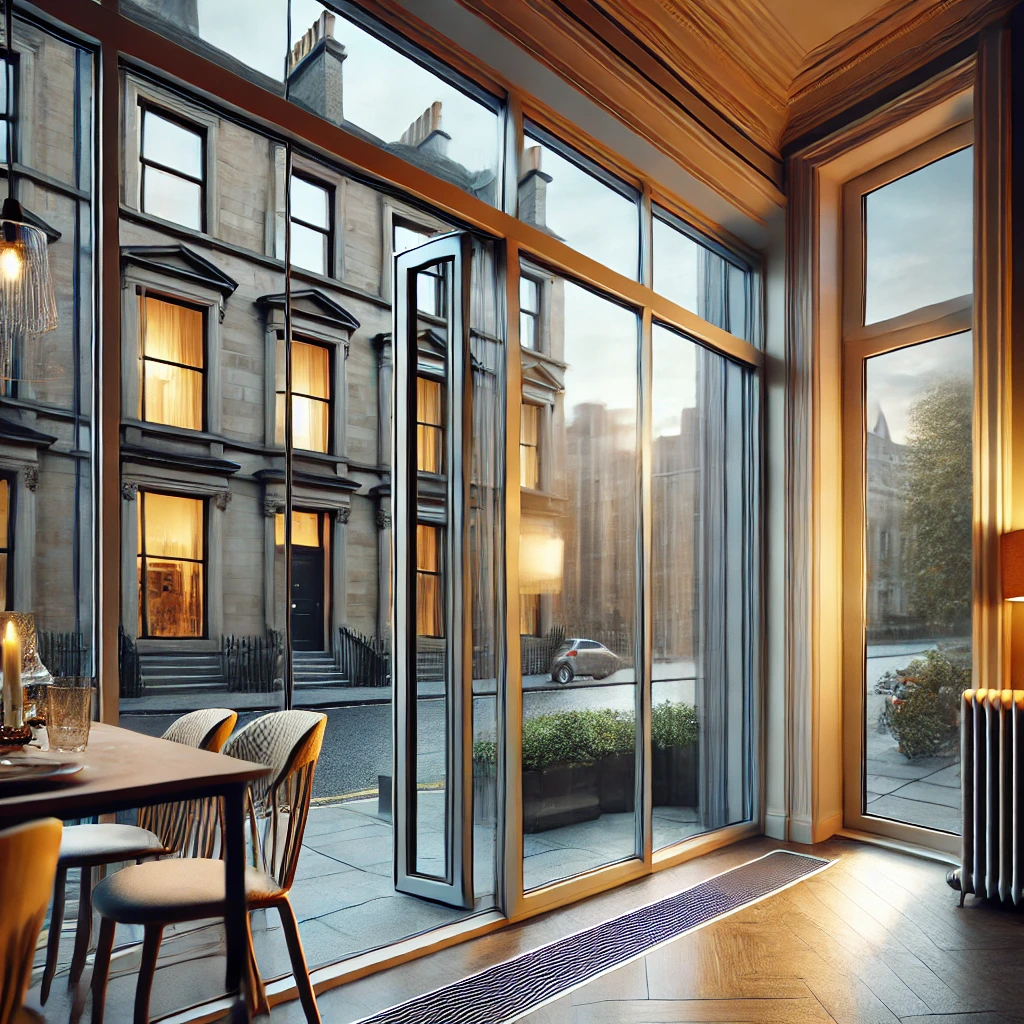When investing in double glazing, ventilation is a crucial factor to consider. One feature that often goes unnoticed but plays a significant role in maintaining a healthy indoor environment is window trickle vents. These small yet essential components help regulate airflow, prevent condensation, and improve indoor air quality. In this guide, we will explore everything you need to know about window trickle vents and how they can benefit your home.
A window trickle vent is a small opening located at the top of a window frame, designed to allow a controlled amount of fresh air to enter a room even when the window is closed. These vents help in maintaining consistent airflow and reducing moisture buildup inside your home. They are particularly useful in modern airtight buildings where natural ventilation is limited.
Why Are Window Trickle Vents Important?
Many homeowners overlook the importance of proper ventilation when upgrading to double glazing. While double-glazed windows improve insulation and energy efficiency, they also seal the home tightly, reducing natural airflow. This can lead to condensation, dampness, and poor air quality. Window trickle vents solve this problem by:
- Reducing Condensation: By allowing fresh air to circulate, trickle vents help prevent moisture buildup, reducing the risk of mold and damp patches on walls and ceilings.
- Improving Indoor Air Quality: They help expel stale air and pollutants from inside your home, promoting a healthier living environment.

- Maintaining a Comfortable Atmosphere: Trickle vents enable controlled airflow, preventing rooms from feeling stuffy or overly humid.
- Meeting Building Regulations: In many areas, building regulations require adequate ventilation in homes, and trickle vents are a simple solution to comply with these requirements.
Do You Need Window Trickle Vents for Double Glazing?
If you are replacing your existing windows with double glazing, you might be wondering whether window trickle vents are necessary. The answer depends on several factors:
- Existing Ventilation: If your home already has a good ventilation system, you may not need additional trickle vents. However, if your home is tightly sealed, trickle vents can help maintain airflow.
- Condensation Issues: If you have experienced condensation problems in the past, installing trickle vents is a practical way to reduce moisture buildup.
- Regulations and Requirements: In some regions, building codes mandate trickle vents in new or replacement windows to ensure adequate ventilation.
How to Choose the Right Trickle Vents
Selecting the right window trickle vents for your home depends on several factors, including the type of windows you have and your specific ventilation needs. Here are some key considerations:
- Size and Airflow Capacity: Trickle vents come in various sizes, and their airflow capacity should match the room’s ventilation requirements.
- Material and Durability: Look for vents made from durable materials such as uPVC or aluminum to ensure longevity and minimal maintenance.
- Ease of Operation: Some trickle vents come with adjustable controls, allowing you to regulate airflow as needed.
- Aesthetic Compatibility: Modern trickle vents are designed to blend seamlessly with window frames, ensuring they do not compromise the overall look of your windows.
Installing Window Trickle Vents
Window trickle vents can be installed on new double-glazed windows or retrofitted onto existing frames. Here’s a general overview of the installation process:
- Determine Placement: Vents are typically installed at the top of the window frame to allow for natural airflow.
- Drill the Necessary Openings: If retrofitting, small holes are drilled into the frame to accommodate the vent.
- Attach the Vent: The trickle vent is then securely attached, ensuring a snug fit to prevent drafts.
- Test Airflow: After installation, it is important to check whether the vent allows adequate airflow without causing excessive drafts.
For best results, it is recommended to hire a professional installer who can ensure proper fitting and compliance with building regulations.
Common Concerns About Window Trickle Vents

While trickle vents offer many benefits, some homeowners have concerns about their impact on insulation and energy efficiency. Here are some common questions:
- Do Trickle Vents Cause Heat Loss?
- Trickle vents allow a small amount of air to flow, but they do not significantly impact the overall insulation of double-glazed windows. When properly installed, they provide ventilation without causing noticeable heat loss.
- Can I Close Trickle Vents in Winter?
- Many trickle vents have adjustable settings, allowing you to reduce airflow during colder months while still maintaining some level of ventilation.
- Do Trickle Vents Let in Noise?
- High-quality trickle vents are designed to minimize noise infiltration, and their impact on sound insulation is usually minimal.
Finding Reliable Double Glazing Installers
When investing in double glazing and considering the addition of trickle vents, it is essential to choose a trusted installer. Working with an experienced professional ensures that your windows are installed correctly and meet all necessary standards.
we make the process simple and stress-free. Our team of expert window surveyors connects you with up to six reputable double glazing installers, helping you compare quotes and find the best deal for your needs. Say goodbye to pushy sales tactics and unreliable contractors – we provide a safe and hassle-free way to upgrade your windows.
Get Expert Advice Today:
If you are considering double glazing and want to ensure proper ventilation with window trickle vents, we are here to help.
Contact us
today to get free quotes from trusted installers and make an informed decision for your home. By choosing the right double glazing solution with trickle vents, you can enjoy a more comfortable and healthier living space without compromising on insulation or energy efficiency.




